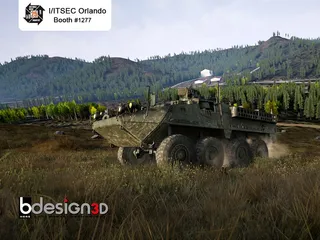They Did a Lot of Training While Deployed
Contact Our Team
For more information about how Halldale can add value to your marketing and promotional campaigns or to discuss event exhibitor and sponsorship opportunities, contact our team to find out more
The Americas -
holly.foster@halldale.com
Rest of World -
jeremy@halldale.com

Much water passed under the keels of the Bataan Amphibious Ready Group’s three ships in which 26th Marine Expeditionary Unit (Special Operations Capable) (MEU(SOC)) was embarked during an eight and a half-month deployment to the US 2nd, 5th and 6th Fleet areas of operations. The MEU (SOC), assigned to USS Bataan (LHD 5), USS Mesa Verde (LPD 19), and USS Carter Hall (LSD 50), completed real-world missions and a rigorous peacetime engagement schedule in support of three geographic commands – US European Command, US Africa Command and US Central Command – until their return to East Coast homeports, bases and stations this spring. The deployed Marines were present in geographically-dispersed regions from Norway to the Baltics, into the Mediterranean Sea, and eventually around the Horn of Africa and inside the Arabian Gulf.
MS&T attended a post-deployment virtual media roundtable this May 28 with 26th MEU (SOC) leadership. This article focuses on several training nuggets gained from the wide-ranging discussion. As an early attention-getter, Col. Dennis Sampson, MEU (SOC) commander, pointed out the scope of the deployment and provided an important thread of continuity among the missions and operations, “We did a lot of training while we were deployed.”
Live Training Most Evident
Of little surprise live training was the main focus of most deployment activities, with bilateral training exercises used to complete live-fire training events, battle drills and other mission sets to allow participating staffs and units to share tactics, techniques, and procedures, integrate effectively, and improve partnerships. One representative effort saw a MEU (SOC) element training alongside Norwegian soldiers, from Brigade North, and Italian Marines, from San Marco Brigade, during a Norwegian bilateral training exercise.
26th MEU(SOC) Marine fires an M72 LAW anti-tank weapon during an integrated platoon reinforced live-fire attack with Kuwaiti Marines at Udairi Range Complex, Kuwait. 26th MEU(SOC) elements completed bilateral training with Kuwait armed forces to increase interoperability, maintain operational readiness, and strengthen relationships with partner forces. Source/credit: US Marine Corps/Gunnery Sgt. Jeffrey Cordero.
Expanded Training Aperture
LtCol. Jeremy Hawkins, the MEU’s S-3 (operations officer), then walked the roundtable members back through the command’s six-month pre-deployment training cycle, first emphasizing that training continuum focused on individuals, small units and the MAGTF (Marine Air-Ground Task Force) levels.
At the overarching level, the MAGTF’s training is integrated with the Amphibious Ready Group during the six months, “so we’re building a MEU-ARG team that we certify for deployment.” As important, during the pre-deployment workups, “we take advantage of simulation, really matching those individual break-out skills at the individual level, the small unit and the MAGTF.” In one instance, Hawkins pointed to the MEU’s aviation element, which completes “heavy simulator training.” The “Ops O” also called attention to the MEU/ARG’s integrated use of simulation to safely land on ships. “In the simulators we currently have, we can put ships in there and get new air crews familiar with the ships, their markings and shipboard procedures – before going out to the ships for initial deck landing qualifications,” he explained.
For the future, Hawkins sees the service building up “robust scenarios to allow us to complete table-top training exercises, so once we get those individual and small unit skills honed, we’re able to continue the planning and briefing, and then we can get into the ‘execution phase’ in a simulated environment while deployed, and continue to refine those tactics, techniques and procedures as a MAGTF.”
More Affirmation of USMC’s Training Advancements
MS&T continues to follow the US Marine Corps’ efforts to modernize its training and education strategies through investments and increased senior leadership support. The notion of using more simulation during pre-deployment training cycles and while forces are deployed will help this sea service elevate its’ individuals’, units’, and staffs’ training readiness.


